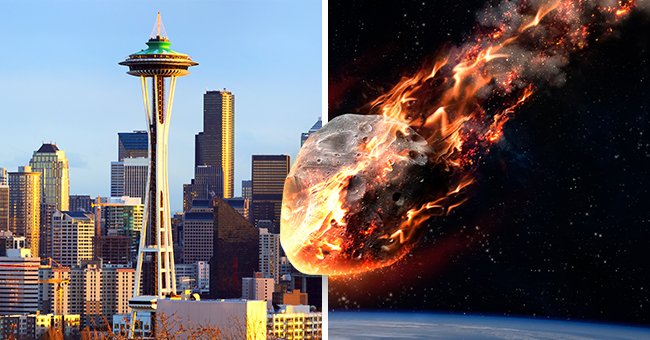
Potentially Hazardous Massive Asteroid Will Pass near the Earth in a Relatively Close Encounter
This week, a potentially hazardous and massive asteroid will pass near the Earth in a relatively close encounter, NASA warns.
NASA warned that a potentially hazardous and huge asteroid called 2021 KT1 would pass near the Earth on Tuesday, June 1, 2021, in relative proximity to our planet.
The asteroid is estimated to be around 600 feet, which is the size of the Seattle Space Needle to New York's Olympic Tower. It will be within 4 500 000 miles of the Earth.

The surface of the Earth from space. | Photo: Getty Images
NASA labeled it potentially hazardous because it is larger than 492 feet and due to its proximity to the Earth. According to the laboratory, it will zoom past the Earth at 40 000 mph.
NASA is keeping its eye on the asteroid, although it is not expected to hit Earth. 2021 KT1 is not the only asteroid coming close to Earth's orbit this week. NASA's website, Jet Propulsion Laboratory listed four other much smaller asteroids.
On Tuesday, an asteroid called 2021 KT2, the size of a bus, will be within 181 000 feet of the Earth. Another 2018 LB, the size of an airplane, will be within 694 000 miles on Tuesday.
While on Wednesday, June 2, 2021, two asteroids the size of a house, called 2021 JW6 and 2021 KEI, will come within 1 930 000 and 3 560 000 miles of the Earth. None are expected to impact the earth negatively.
If stargazers want to see the asteroids this week, they might need to use a backyard telescope.
Other asteroids have come close to the Earth this year. In April, an asteroid called 2021 GW4 was 12 000 miles away from the plant, traveling at a speed of 18 700 mph. Astronomer Gianluca Masi called it "an exceptionally close encounter."
In March this year, the Earth saw a close encounter with another big asteroid called 2001 FO32. It was the biggest asteroid to pass by the earth this year, and it is estimated to be around 0.6 miles long.
It was also one of the fastest asteroids to move around the Earth, as it zoomed past at 76 980 mph. NASA also classified it as a potentially hazardous asteroid because of its size and proximity to our earth.
Another larger asteroid called 99942 Apophis and named after the Egyptian god of chaos, zoomed past the Earth at the beginning of March. The asteroid was nearly as big as the Empire state building.
NASA defines asteroids as "rocky fragments left over from the formation of the solar system 4.6 billion years ago." The matter is supposed to orbit around the sun, but this can change because of the gravitational pull from other planets.
If stargazers want to see the asteroids this week, they might need to use a backyard telescope and position it at the right place and time. Asteroids usually appear as moving stars, that is, if they are visible to the naked eye.
